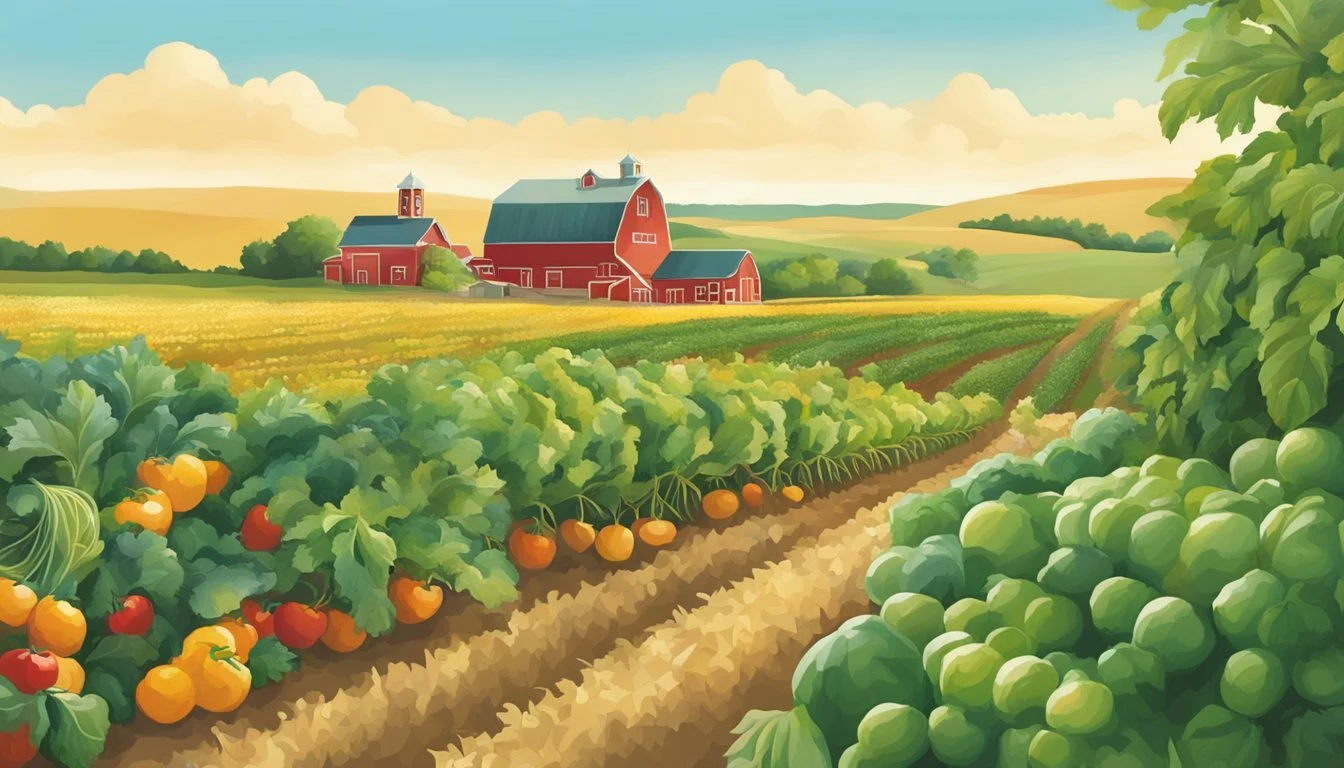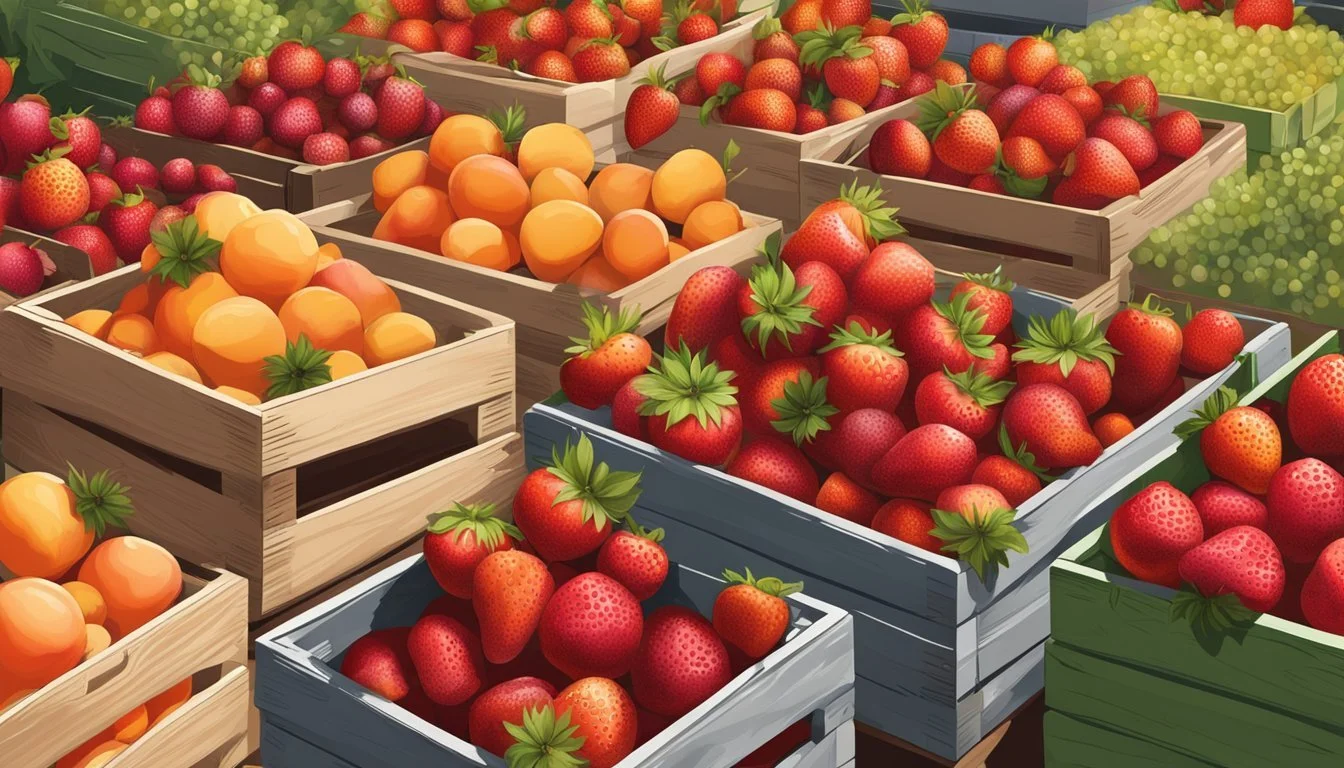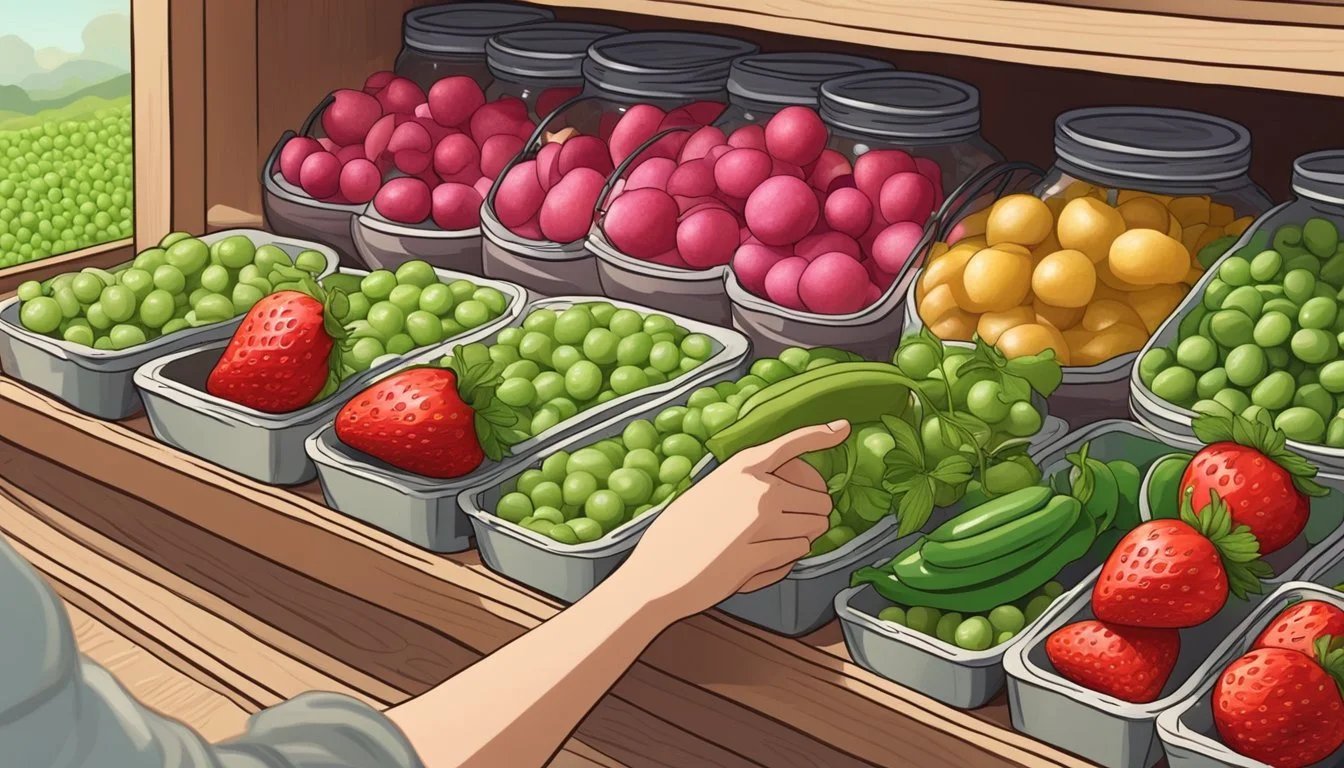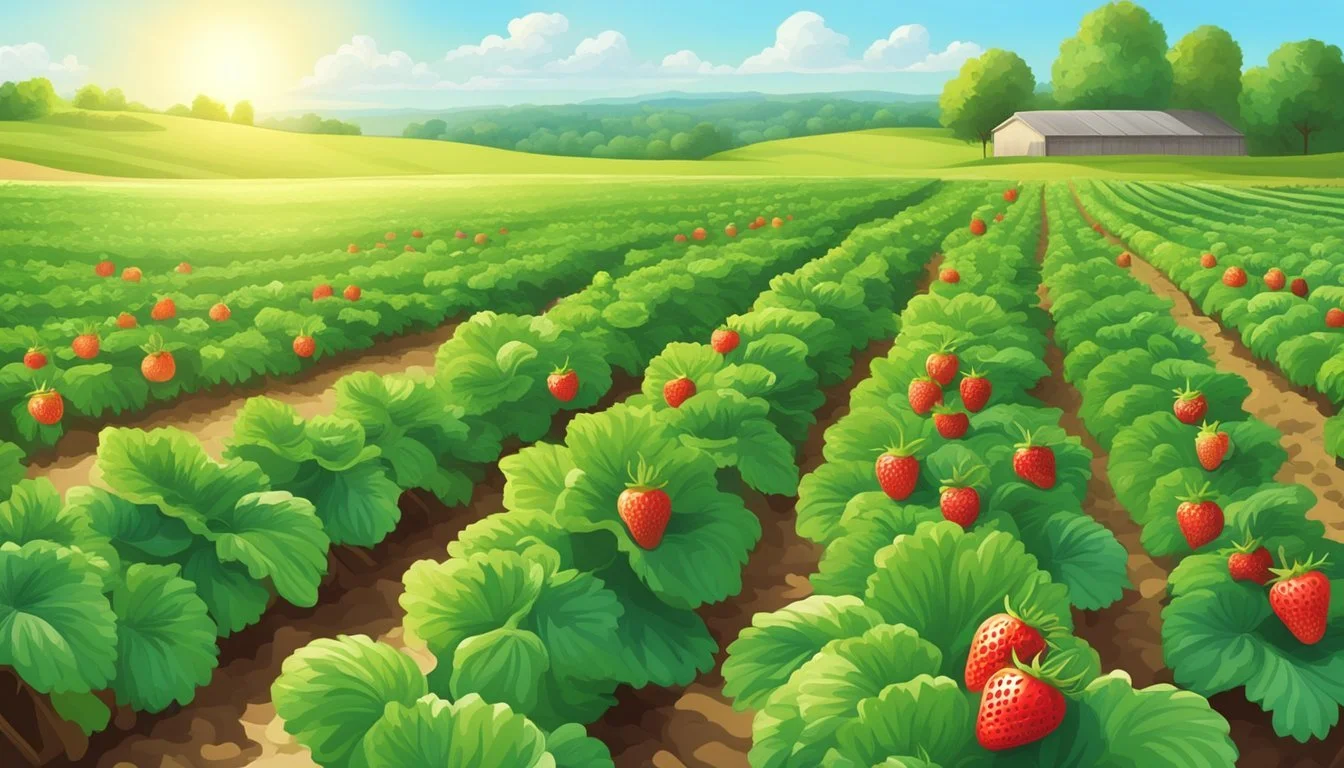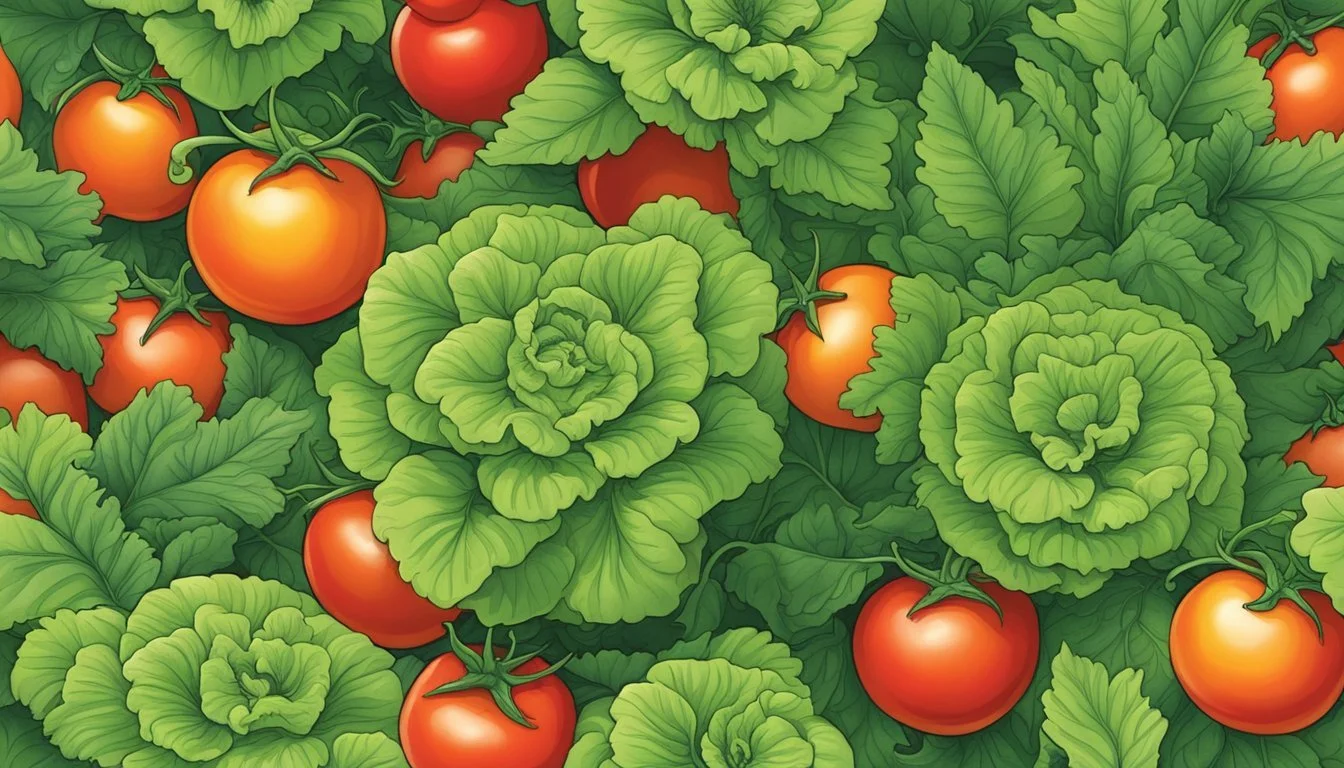Nebraska Seasonal Fruit & Vegetables in June
Your Fresh Guide
This Article is Part of our Nebraska Seasonal Fruit & Veg Calendar
In Nebraska, June marks a time of abundance for locally-grown produce. As the month unfolds, gardens and farms across the state begin to yield a bountiful variety of fruits and vegetables that are ripe for harvest. This period is particularly notable for consumers seeking the freshest, most nutrient-rich options, as locally sourced produce reaches peak seasonal availability. From leafy greens to the start of the summer's sweet berries and stone fruits, the selection is vibrant and diverse.
The emphasis on seasonal produce aligns with both nutritional benefits and culinary quality. Fruits like strawberries and cherries (how long do cherries last?) start to come into season in Nebraska during June, offering intense flavor and high levels of antioxidants. Meanwhile, vegetables, including cucumbers, beets (how long do beets last?), and a range of leafy greens such as kale and lettuce, are also plentiful. These items not only pack a punch in terms of taste but also contribute essential vitamins and minerals to the diet.
Consumers keen to support the local economy and reduce their carbon footprint look to Nebraska's farmers' markets and produce stands in June. Here, they'll find the freshest fruits and vegetables the state has to offer, with the advantage of shorter farm-to-table distances ensuring optimum freshness. The produce calendar in Nebraska is a testament to the region's fertile soils and favorable growing conditions, fostering a sense of community around the shared appreciation of homegrown foods.
Nebraska's Agriculture Overview
Nebraska's rich agricultural heritage is molded by its climate, soil conditions, and the diligent farming practices adopted by its residents. Understanding these factors is crucial for appreciating the state's ability to produce a variety of crops, especially during the June growing season.
Climate and Soil Conditions
Nebraska's climate is typified by its continental characteristics, which include hot summers and cold winters. The state falls into the USDA Hardiness Zones 4 through 5 in the north and 5 through 7 in the south. This variation influences the type of crops that are seasonally available. June marks the transition from spring to summer, offering warm temperatures and longer daylight hours, which are beneficial for crop growth.
The soil across Nebraska is predominantly part of the Mollisol soil order, known for its fertility and high organic matter content. Primarily, the state boasts the rich, loamy soil of the Platte and Elkhorn river valleys, which is excellent for agriculture.
Farming and Harvesting Practices
Farmers in Nebraska implement a mix of traditional and innovative practices to ensure sustainable agriculture and high-quality produce. They engage in crop rotation and use modern irrigation techniques, reflecting the state's commitment to efficient water use. With June being a critical month for planting and growth, farmers pay extra attention to pest management and soil health to optimize yield.
In the realm of harvesting, technology plays a significant role. Nebraska farms frequently utilize machinery and data-driven strategies to forecast weather patterns, assess crop health, and plan harvests to occur at peak ripeness, ensuring the best quality produce for the market.
Seasonal Fruits in June
In June, Nebraska's fruit harvest comes into full swing with an array of berries, stone fruits, and melons, delivering fresh flavors and variety.
Berries
Strawberries: June marks the peak of strawberry season in Nebraska. These sweet, red berries are widely available and perfect for eating fresh or incorporating into desserts.
Blueberries: While they start to appear in June, they reach their peak a bit later. If encountered, they're a nutritious choice, packed with antioxidants.
Raspberries: These delicate fruits may start to come into the market. Raspberries are great for snacking or adding a burst of flavor to salads and pastries.
Stone Fruits
Cherries: Cherries have a short season, and June is typically when they are at their best in Nebraska. Enjoy them fresh or use them in baking.
Plums: As with blueberries, plums begin to show up towards the end of June, signaling the arrival of a wider variety of stone fruits.
Peaches: While peaches might start to appear by late June, they usually hit their prime a bit later in the summer.
Melons
Watermelons: The summer heat nurtures these large, refreshing fruits, and they start to become available in June.
Cantaloupes: Also known retroactively as muskmelons, cantaloupes might begin to emerge at farmers markets across Nebraska, ready to deliver their sweet, musky flavor.
Seasonal Vegetables in June
In Nebraska, June marks the harvest of a diverse range of vegetable crops, enriched by the state's thriving agricultural ecosystem. Domestic gardens and local farmers' markets brim with fresh produce, exemplified by leafy greens, a variety of root vegetables, and the arrival of nightshades and cucurbits.
Leafy Greens
Nebraska's June harvest prominently features leafy greens, which include several varieties. Lettuce and kale are particularly abundant, offering fresh, nutritional options for salads and side dishes. These greens thrive in the spring to early summer climate before the peak summer heat sets in.
Lettuce: Romaine, Butterhead, Leaf
Kale: Curly, Lacinato, Red Russian
Root Vegetables
Early summer in Nebraska is also a suitable time for harvesting certain root vegetables. Carrots and beets are generally ready to be pulled from the soil, delivering a sweet and earthy burst of flavor, ideal for both raw and cooked preparations.
Carrots: Imperator, Nantes
Beets: Detroit Dark Red, Golden
Nightshades and Cucurbits
As June progresses, nightshade vegetables begin to make their appearance. Tomatoes are starting to ripen on the vine, while peppers — ranging from bell to spicier varieties — add color and flavor to the expanding selection. The cucurbit family, which includes cucumbers, also starts to proliferate, perfect for cool, crisp salads.
Tomatoes: Beefsteak, Cherry
Peppers: Bell, Jalapeño
Cucumbers: Marketmore, Lemon
Selecting and Storing Tips
In June, Nebraska boasts a rich variety of fresh vegetables and fruits. Making the right selection and employing proper storage techniques ensures maximum flavor and longevity of your produce.
How to Choose Ripe Produce
Selecting ripe produce requires attention to detail. Texture, color, and aroma are key indicators. For instance, ripe sweet corn should have bright green husks with silky tassels, and the kernels should be plump and milky. One should look for bright color and a slight give upon gentle pressure when choosing vegetables like tomatoes and peppers, indicating ripeness without over-softness.
Tomatoes: Deep color, firm to a light touch
Peppers: Vivid color, firm, glossy exterior
Sweet Corn: Green husks, moist tassels, plump kernels
Storage Techniques
Storage techniques can vary substantially between different types of fruits and vegetables, affecting their taste and texture once ready to eat. Vegetables like sweet corn are best kept in the refrigerator with the husks on to maintain freshness. On the contrary, certain produce such as tomatoes is better stored at room temperature to preserve flavor and prevent a mealy texture.
Sweet Corn: Refrigerate immediately with husks in a plastic bag.
Tomatoes: Store at room temperature away from sunlight.
Leafy Greens: Store in the refrigerator in a plastic bag with a paper towel to absorb excess moisture.
Storage life can be extended with proper techniques, thus maximizing the benefits of June's offering of fresh produce in Nebraska.
Preparation and Cooking Ideas
June in Nebraska offers a wealth of fresh produce that can be transformed into delightful dishes with a little culinary creativity. Vibrant fruits and vegetables are ripe for the picking, and incorporating them into recipes or serving suggestions allows them to shine on the summer table.
Simple Recipes
Fruit Salads: A refreshing fruit salad can be a go-to dessert or side dish in June. Mix sliced strawberries, blueberries, and cherries with a drizzle of honey and a squeeze of fresh lime juice for a quick, healthy treat.
Grilled Vegetables: (What wine goes well with grilled vegetables?) Showcase June's vegetables like bell peppers, zucchini, and sweet corn by grilling them. Just brush with olive oil, sprinkle with salt and pepper, and grill until they have nice char marks. Serve as a side dish or add to sandwiches for extra flavor.
Creative Serving Suggestions
Stuffed Tomatoes: Hollow out vine-ripe tomatoes and fill with a mixture of cooked quinoa (how long does cooked quinoa last?), fresh basil, and crumbled feta cheese. This can serve as a light lunch or an appetizer.
Broccoli Salad: Toss broccoli florets with shredded carrots, sliced almonds, and a tangy yogurt-based dressing. Bright and flavorful, this salad is a perfect accompaniment to any summer meal.
Health and Nutrition
Consuming seasonal fruits and vegetables in June offers a variety of health benefits owing to their freshness and nutritional content.
Nutritional Benefits of Seasonal Produce
Seasonal fruits and vegetables harvested during their peak months, including June, typically contain higher levels of vitamins and minerals. For example, locally sourced strawberries that are ripe in June are a good source of vitamin C and antioxidants. Leafy greens, such as spinach, are abundant and offer nutrients such as iron, fiber, and several vitamins (A, C, K).
Including Produce in Your Diet
Incorporating these fresh, seasonal offerings into one's diet can contribute to better health. A simple method is to fill half of your plate with vegetables and fruits, emphasizing variety for a range of nutrients. Fruit salads or smoothies can be an enjoyable way to consume June fruits, like berries, while salads and steamed vegetables can effectively incorporate greens and other vegetables into daily meals.
Preservation Methods
In Nebraska, the bountiful harvest of fruits and vegetables in June calls for effective preservation methods to extend their shelf life. Canning and freezing are two popular methods that allow one to enjoy Nebraska's seasonal produce throughout the year.
Canning and Freezing
Canning is a reliable method to preserve fruits and vegetables in airtight containers for extended periods. There are two primary canning techniques:
Boiling-water canning: Ideal for high-acid foods like fruits, jams, and jellies.
Pressure canning: Necessary for low-acid foods to prevent the risk of botulism.
Freezing is another excellent preservation method, particularly for locking in the freshness and nutrients of produce. To effectively freeze fruits and vegetables, they should be:
Washed and dried thoroughly.
Cut into appropriate sizes.
Blanched if needed (mainly for vegetables).
Stored in airtight, freezer-safe containers or bags.
Preservation Tips:
Label containers with the date of freezing or canning to keep track of shelf life.
Use a pressure canner for vegetables to ensure safety and quality.
By utilizing these preservation techniques, consumers can enjoy Nebraska's June harvest well beyond its season.
Where to Find Local Produce
In June, those seeking the freshest local produce in Nebraska will find an abundance of options. The state boasts a variety of venues where one can purchase seasonally available fruits and vegetables straight from the source.
Farmers Markets
Farmers markets are at the heart of Nebraska's local food scene. They offer a direct connection between consumers and growers, providing a venue to purchase the season's freshest produce. For example:
Omaha Farmers Market: A bustling marketplace such as the Omaha Farmers Market provides a wide range of local fruits and vegetables.
Lincoln Haymarket Farmers Market: Here, shoppers can enjoy the seasonal offerings of the region, with stands brimming with fresh goods.
Grocery Stores and Co-ops
For convenience and variety, grocery stores and co-ops are reliable sources for local produce. They often source directly from local farms or through distributors specializing in regional goods, ensuring that consumers have access to fresh, in-season produce without necessarily having to visit a farmers market. Examples include:
Local Co-ops: These stores frequently supply a curated selection of local fruits and vegetables that support Nebraska's agricultural community.
Chain Groceries: Larger grocery chains in Nebraska also participate in stocking locally grown produce to meet consumer demand for fresh, regional options.
Growing Your Own Garden
June marks a busy month in Nebraska for gardeners, focusing on taking advantage of the warm weather to establish a flourishing garden.
Planning and Planting
Proper planning ensures a successful harvest. Gardeners should consider the local climate—Nebraska falls within USDA hardiness zones 4 and 5—and plant accordingly. June is ideal for planting warm-season vegetables, which thrive in the summer heat.
Vegetables to Plant in June:
Beans
Squash
Cucumbers
Planning also involves understanding that fall crops need to be started later in the season, as they must mature before the first frost. Preparation for fall planting begins now with decisions about which vegetables to grow and where they will be placed in the garden layout.
Garden Maintenance
Once the garden is planted, maintenance is key. Gardeners should ensure consistent watering, particularly during dry spells, to keep plants healthy. Mulching helps retain soil moisture and regulates soil temperature. Moreover, June is a prime time for pests to appear, so gardeners must remain vigilant and take measures to protect their plants.
A regular schedule for checking plant health can help identify any issues before they become problems. Weed control is also critical, as weeds compete with garden plants for nutrients and light.
Gardeners should remember that Nebraska's weather can be unpredictable, and they may need to provide protection for their plants in case of unexpected temperature drops, even in summer.


